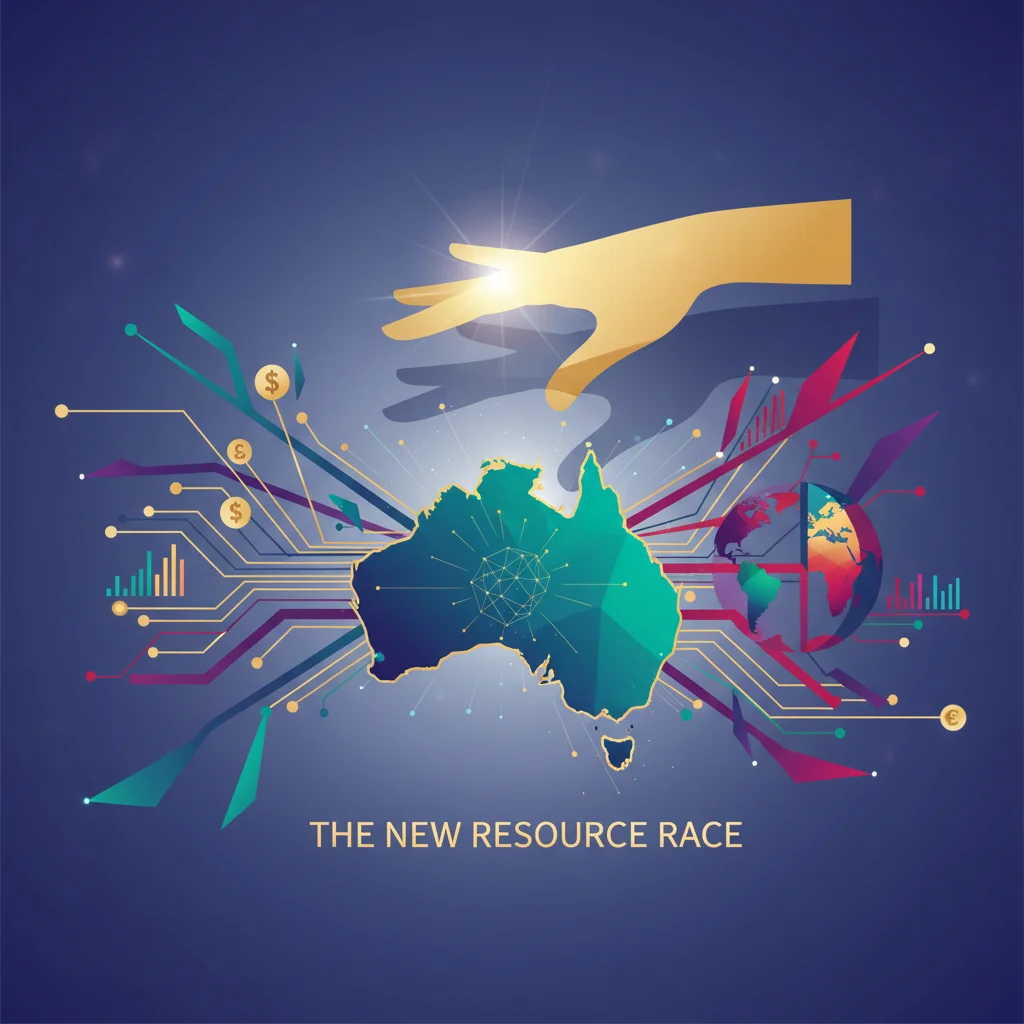
The New Resource Race: Why a Billionaire’s Bet on Australian Rare Earths is Reshaping Global Finance and Geopolitics
In the intricate dance of global economics and geopolitics, some moves are more significant than others. A subtle shift in investment can signal a tectonic change in global strategy. Such is the case with the recent backing of an Australian rare earth project by mining magnate Gina Rinehart, a move that reverberates far beyond the dusty outback of the Northern Territory. This isn’t just a story about mining; it’s a story about power, technology, and the future of the global economy. It’s a critical development for anyone involved in investing, international finance, and strategic business leadership.
The announcement that Rinehart’s Hancock Prospecting is injecting up to A$600mn ($395mn) into Arafura Rare Earths’ Nolans project is more than a headline-grabbing investment. It represents a deliberate and strategic push by Western allies to break the world’s critical mineral dependency on China. For decades, China has methodically built a near-monopoly on the mining and processing of rare earth elements (REEs)—the essential ingredients for everything from iPhones and electric vehicles to F-35 fighter jets and wind turbines. This strategic vulnerability has become a paramount concern in Washington, Brussels, and Canberra, transforming the sleepy mining sector into a frontline of geopolitical competition.
What Are Rare Earths, and Why the Urgency?
Despite their name, rare earth elements aren’t particularly rare. However, they are difficult and expensive to mine and process cleanly. This 17-element group on the periodic table possesses unique magnetic and conductive properties that are irreplaceable in high-tech applications. The global transition to a green economy and the increasing sophistication of military technology have turned these elements into the 21st century’s most critical resource.
The core of the issue lies in concentration. China currently accounts for over 70% of global rare earth mining and a staggering 90% of the processing and refining. This dominance gives Beijing immense leverage, which it has not been shy about using. The threat of restricting exports creates immense volatility and risk for global supply chains, affecting everything from consumer electronics prices to national security capabilities. This is not a theoretical problem; it’s a clear and present danger to the stability of the international stock market and the industries that drive it.
To illustrate the scale of this dependency, consider the global production landscape for these vital materials.
| Country | Mine Production (Metric Tons) | Reserves (Metric Tons) |
|---|---|---|
| China | 240,000 | 44,000,000 |
| United States | 43,000 | 2,300,000 |
| Australia | 18,000 | 4,200,000 |
| Burma (Myanmar) | 38,000 | N/A |
| Rest of World | ~21,000 | ~70,000,000 |
Data synthesized from various geological surveys and industry reports. Production figures highlight mining output, but the key bottleneck remains in processing, which is even more heavily dominated by China.
Revisiting Brexit: The Economic Imperative Staring Britain in the Face
Australia’s Nolans Project: A Strategic Countermove
This is where the Arafura Nolans project enters the picture. Located north of Alice Springs, it is one of the most significant rare earth development projects outside of China. It is particularly rich in Neodymium and Praseodymium (NdPr), two REEs critical for the high-performance permanent magnets used in EV motors and wind turbines. Rinehart’s investment is a powerful vote of confidence, providing a substantial portion of the project’s A$1.68bn development cost and signaling to the market that private capital is ready to align with national strategic interests.
This private-sector momentum is being amplified by government action. The Australian government has identified the Nolans project as strategically important, providing A$840mn in debt financing. This public-private partnership model is crucial. The high capital expenditure, long lead times, and inherent price volatility of the commodities market make these projects a risky proposition for private investing alone. Government support, through loans, grants, and offtake agreements, de-risks the venture and creates a stable foundation for a new, diversified supply chain. This is a clear example of how fiscal policy and strategic economics are being deployed to achieve geopolitical goals.
The Broader Implications for Finance and Technology
The race for rare earths is creating fascinating new dynamics across the financial and technological landscapes. For those in finance and trading, this is a new frontier for commodity speculation and investment. The stock prices of junior miners and exploration companies are becoming increasingly sensitive to geopolitical news, creating both opportunities and significant risks. Exchange-Traded Funds (ETFs) focused on critical minerals are gaining popularity as a way to gain diversified exposure to this trend.
Furthermore, the challenge of building transparent and ethical supply chains is a perfect use case for emerging financial technology. The demand for provenance—knowing exactly where a mineral came from and that it was mined responsibly—is growing. This is where technologies like blockchain can play a transformative role. A distributed ledger could create an immutable record of a mineral’s journey from mine to manufacturer, satisfying ESG mandates from investors and providing verifiable proof of an “ethically-sourced” final product. This intersection of heavy industry and cutting-edge fintech could redefine supply chain management.
The role of traditional banking is also evolving. Project financing for multi-billion-dollar mining operations requires complex financial instruments, international cooperation, and a deep understanding of political risk. We are seeing a new class of strategic financing emerge, where national and development banks work alongside private equity and commercial lenders to underwrite projects that serve a dual purpose: generating financial returns and enhancing national security.
The Long Road to Diversification
It is crucial to maintain perspective. The Nolans project, even at full capacity, will not single-handedly break China’s grip on the rare earths market. It is, however, a vital piece of a much larger puzzle. Similar projects are being explored in the United States, Canada, and Europe. The goal is not to replace China entirely but to create a viable, resilient, and reliable alternative supply chain among allied nations—a concept often referred to as “friend-shoring.”
This strategic shift requires a multi-faceted approach:
- Investment: Continued public and private capital injections into exploration, mining, and—most critically—processing facilities.
- Innovation: Research and development into recycling rare earths and designing new technologies that require fewer of these critical minerals.
- Policy: Long-term government commitments, streamlined permitting processes, and international trade agreements that support the growth of these new supply chains.
Beyond the Rhetoric: Decoding the Economic Warfare Between China and Japan
The investment by one of Australia’s most prominent billionaires is a powerful catalyst. It sends a clear signal that the private sector is ready to step up, aligning immense financial resources with the strategic imperatives of the Western world. For business leaders, investors, and finance professionals, the takeaway is clear: the global supply chain is being redrawn along geopolitical lines. The competition for the resources that power our future is intensifying, and understanding the intricate links between mining, economics, and national security is no longer optional—it is essential for navigating the complex landscape of the 21st-century global economy.


